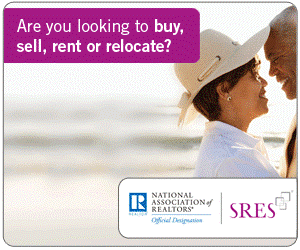

Twin Cities Senior Housing
Ownership
Rental
- Life Care Community
- CCRC
- Independent Living
- Assisted Living
- Memory Care Residence
- Care Suite
- Residential Care Home
- Nursing Home
- Subsidized Housing
- Subsidized with Services
The “Senior Housing Directory” is a comprehensive listing of all senior housing in the 11-county metro area surrounding St. Paul and Minneapolis. It is divided into two types, ownership and rentals. Ownership options include condominiums, townhomes, and cooperatives all of which typically offer few, if any, services or personal care, but have many building amenities. Rental units are apartments or town homes and can be market rate or subsidized. In each type renters pay a specified amount each month in order to reside in the unit. Market rate simply means whatever the unit will bring in the local market. Subsidized housing is an affordable rental option for those with limited means; residents pay a percent of their income for rent, usually 30%.
Ownership: Condominiums, Townhouses and Cooperatives
When downsizing from a house you may think your only alternative is renting, but there are other ownership options. You may want to consider a condominium, townhome, or a cooperative. In both condominiums and townhomes, residents hold title to the unit in which they live and obtain their own mortgage. Common property, such as halls, laundry areas, community rooms, etc., are held jointly by all residents and they pay a Homeowners Association Fee, HOA Fee, for upkeep of these areas. Cooperatives are similar, but have a corporation, composed of members, who own and run the property. Members purchase share(s) in the corporation in order to live there and must sign an occupancy agreement in which they agree to pay a one-time membership fee as well as a monthly fee. In all three of these types of housing there are typically very few services offered, but residents may be able to bring in home care if needed.
Rental units include apartments and townhomes and may be market rate or subsidized. In both types of housing renters pay a specified amount each month in order to reside in the unit. Market Rate simply means whatever the unit will bring in the local market. Residences that have the words “Income Guidelines on Some Apartments” or “Income Guidelines” in their listing cost less than market rate units (they are below market rate). In these units there is a ceiling as to how much a resident can make and all renters pay the same amount (rent is not 30% of one’s income). There is more information on subsidized housing, read below, “Subsidized Housing and Subsidized Housing with Services”.
Life Care Communities and CCRCs, Continuing Care Retirement Communities
Life Care Communities and CCRCs, Continuing Care Retirement Communities, both offer a continuum of care that allows residents to “age in place”. Campuses for these types of communities include everything from independent living to skilled nursing care. Residents of CCRCs pay an endowment fee upon entering as do residents of a Life Care Community, but residents of CCRCs pay for services as they need them and Life Care residents pay a flat fee that remains the same as long as they live there. For both types of communities there is a second person fee for services.
Independent Living, Housing with Services, Assisted Living, Memory Care
Some rentals are stand alone and offer one type of housing, such as Assisted Living, while others offer a continuum of care where one can “age in place”. This means services can be added as they are needed. Some or all of the housing options they may have as part of their campus are the following: Independent Living (no or extremely limited services), Housing with Services, Assisted Living, Memory Care, Care Suites, Enhanced Care and Skilled Nursing Care. Residences offering services may have a basic package included in the rent and then offer one or , more service packages based on a resident’s needs. Sometimes residents can purchase services à la carte, meaning residents can add service(s) as they are needed. For residents that live in independent living they may be able to bring in their own home care. Make sure you understand all costs and how you will be paying for them.
Subsidized Housing and Subsidized Housing with Services
Subsidized housing is an affordable rental option for those with limited means. Residents pay a percent of their income for rent, usually 30%. Another type of subsidy is a rent range meaning there are lower and higher limits as to how much rent is owed based on income. Some buildings offering subsidized housing also have services available which residents pay for on a sliding fee scale.
Residential Care Homes
Residential Care Homes offer general care (assisted living) and/or memory care in a home setting in a residential neighborhood. Typically these homes are large single family homes that house several residents, however they can be purpose built. Some Residential Care Homes are specialty homes and may be for residents that have alzheimer’s or for women only or for residents that have MS, etc.
All information is dynamic and can change by the respective companies listed herein at ANYTIME. Use this guide as a reference point ONLY. We believe the information herein it is accurate but not guaranteed and may not be current as we are not able to update all information.
© 2025 Senior Housing Guide, John Mazzara and Associates. All rights reserved
Hosting by Gearboxlab

